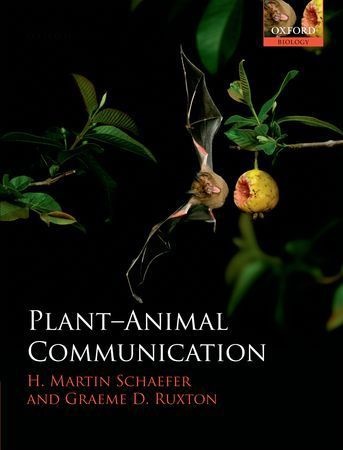Ulteriori informazioni
Informationen zum Autor Martin Schaefer is Associate Professor in Evolutionary Biology and Ecology at the University of Freiburg. His main research interests are the sensory ecology of plant-animal interactions in the three fields covered in this book, seed dispersal, plant defence and carnivory. He uses an integrative approach of combining biochemical analyses with theoretical modelling and experimental work. His work focuses on the behavioural ecology of vertebrates and invertebrates interacting with plants and on the plants themselves. His background in plant physiology and biochemistry will help to describe the proximate mechanisms involved in plant signalling.Graeme Ruxton has co-authored two previous monographs (Living in Groups, 2002, Oxford University Press; Avoiding attack: the evolutionary ecology of crypsis, warning signals and mimicry, 2004, Oxford University Press). He is Professor of Theoretical Ecology at the University of Glasgow. His main research interests are in sensory ecology and how one species can exploit the senses of another. This research is carried out through mathematical modelling combined with laboratory and field studies. Graeme's background in the sensory ecology of animal-animal predation allow this book to utilise the extensive theoretical developments associate with this field, and translate these into plant-animal interactions. Klappentext A summary of the diverse communication systems between plants and animals. This book explains the theoretical foundations of communication and applies them to the diverse processes in which plants can act as prey or predators of animals. It lays out fundamental concepts such as deception, reliability, and camouflage and explains their evolution. Zusammenfassung A summary of the diverse communication systems between plants and animals. This book explains the theoretical foundations of communication and applies them to the diverse processes in which plants can act as prey or predators of animals. It lays out fundamental concepts such as deception, reliability, and camouflage and explains their evolution. Inhaltsverzeichnis Preface 1: Communication and the Evolution of Plant-Animal Interactions 2: Animal Sensory Ecology and Plant Biochemistry 3: Animals as Seed Dispersers 4: Visual Communication in Fleshy Fruits 5: Evolutionary Ecology of Non-Visual Fruit Traits 6: Flower Signals and Pollination 7: The Potential for Leaf Colouration to Communicate to Animals 8: Plant Crypsis, Aposematism, and Mimicry 9: Chemical Communication by Plants about Herbivores 10: Sensory Aspects of Carnivorous Plants 11: Final Thoughts Glossary References Index ...

